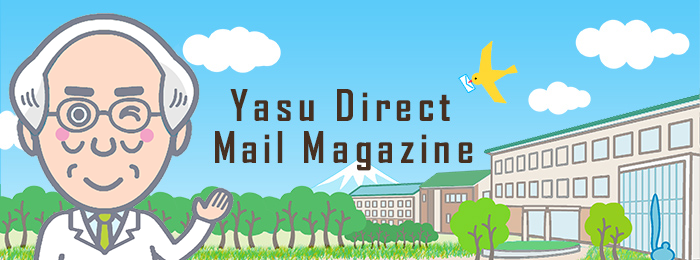No. 4 (April 15, 2015)

Yasu Direct Mail Magazine No. 4 (April 15, 2015)
To all new students, congratulations on your admission! And to all current students, congratulations on moving forward one year!
To ensure that short doctoral courses are as efficient and meaningful as possible, it is beneficial to have a good understanding of and leverage SOKENDAI's characteristics and strengths. I mentioned these characteristics and strengths in detail in my recent speech at the Entrance Ceremony (Note 1), but to summarize they include the following three points. The first point is yourself and your friends who possess high potential and have overcome many barriers to enter SOKENDAI from other universities.
The second point is the excellent learning environment (composed of fundamental departments) and faculty members at this international, central research base that carries out advanced research of the top level in the world (Note 2). The third point is the school-wide, synthetic liberal arts education program for mastering comprehensiveness, as well as special education programs including Interdepartmental Education Programs.
In this issue, I would like to make some additional remarks about "comprehensiveness" ( Sohgoh in Japanese), which is also related to the source of this university's name. It does not refer to "synthesis" (also Sohgoh in Japanese), an antonym of "analysis" that was discussed as a scholarly method in Discourse on the Method (1637) by Descartes. Of course, the method of first analyzing and then synthesizing the results from research on a single phenomenon in a specific field is not itself mistaken-the issue is its presupposition. The philosophy of Descartes-the father of modern science-separates nature and reason, meaning that humans deal with nature in a mechanistic or even subjugation-based fashion. Accordingly, natural science is fragmented into many specialized fields. This philosophy has resulted in remarkable growth in each of these fields while providing prominent methods in each field.
However, today humankind is facing many important challenges that cannot be resolved unless we bridge these fields. To solve these numerous problems, we must develop new scholarly fields. SOKENDAI's concept of "comprehensiveness" strives to build foundations for creating these new fields. I believe the educational content that should be included to this end today is a broad perspective, cross-disciplinary competence, and partnerships with society.
Naturally, Descartes' philosophy severed the relationship between the humanities and sciences.
"Comprehensiveness" does not refer to fusing the humanities and sciences as a simple way to connect these two fields, presupposed on this severance. Regarding the philosophical thought that returns to the presupposition that is the source of this severance, I recommend referring to works such as Introduction to Human Philosophy ( Jinrui Tetsugaku Josetsu in Japanese) (2013), the latest book by Takeshi Umehara (first Director General of the International Research Center for Japanese Studies) (Note 3), which I introduced in my speech at the Entrance Ceremony. Considering this, the education programs at SOKENDAI for acquiring "comprehensiveness" allow students in both the humanities and sciences to learn together in the same location.
I think training camp-type programs are the best way for students from differing fields to engage in close communication-going beyond the borders of the humanities and sciences-and hopefully acquire the incentive to open up new cross-disciplinary fields and also create friendly relationships meet people they can consult with in the future. The SOKENDAI Freshman Course, a training camp-type synthetic liberal arts education program for all students, and the Hayama Course (tentative name), a new training camp-type professional basic education program to create connections between different fields that is currently in the planning stage, are designed to provide opportunities of this sort.
Through this education I hope to cultivate humanities researchers who are originally from the sciences, such as Tadao Umesao (first Director General of the National Museum of Ethnology) (Note 3) and Hayao Kawai (second Director General of the International Research Center for Japanese Studies) (Note 3); science researchers originally from the humanities; and researchers who are versed in both the humanities and sciences.
My keen hope is that you will utilize SOKENDAI's characteristics and strengths, aim to become researchers who can discover new issues and solve these issues, strive to become researchers who can pioneer new fields, and learn together with friends in differing fields.
I look forward to talking with you again in the next issue.
Note 1) Please refer to my speech (see /en/en-news/18886/ ) at the Entrance Ceremony on April 6, 2015.
Note 2) In fact, Prof. Shin Nakamura (Chuo University), who has been awarded SOKENDAI Scientist Award (see /en/en-news/18766/ ), stated one of key messages in his award lecture: It is not until getting a chance to learn at a department of SOKENDAI that he could become an established scientist.
Note 3) All of these men are SOKENDAI emeritus professors.
Supplement 1) I would be happy, if you could read Yasu Direct Mail Magazines hitherto delivered (No. 1 to No. 3 see http://202.243.234.21/en/outline/history/presidents/yasunobu_okada/yasu_tsushin/backnumber/ )
